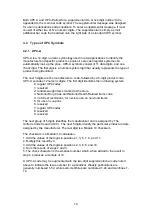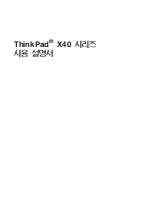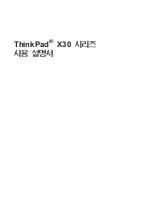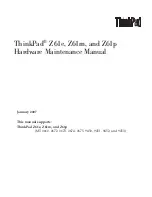
10
2 Code
39
2.1 About Code 39
Code 39 was the first alphanumeric bar code developed and is the most widely used.
Also known as Code USD-3 or Code 3/9, Code 39 is widely used in many industries
and is the standard for many government bar code specifications, including the U.S.
Department of Defense. Code 39 is defined in American National Standards Institute
(ANSI) standard MH10.8M-1983.
Code 39 is often used for identification, inventory, and work-in-process tracking
because the character set is alphanumeric, the input string length is variable
(although more than 25 characters is hard to accommodate), and the symbol itself
can vary in height and width. It is bi-directional, includes a checksum option, and is
discreet.
BT-1000 includes eight fonts and switching between them changes the bar code’s
width and density without changing its height.
2.2 What’s in it?
Code 39 is an alphanumeric bar code that can be as long as necessary to store
encoded data. Designed to encode 26 uppercase letters, 10 digits and 7 special
characters, the Code 39 character set includes the digits 0-9, the letters A-Z (upper
case only), and the following symbols: space, minus (-), plus (+), full stop (.), dollar
sign ($), slash (/), and percent (%). It can be extended to code all 128 ASCII
characters by using a two character coding scheme. Extended characters are
encoded by a pair of normal Code 39 characters; for example, a lower case 'a' (not
part of the standard Code 39 character set) can be encoded by the pair '+A'. A
carriage return control code can be encoded by the pair '$M'.
The symbol includes a quiet zone, the start character "*", the encoded data, the stop
character "*", and a trailing quiet zone. The asterisk in code 39 is used as the start
and stop bar. 5 bars and 4 spaces for a total of 9 elements represent each character.
Each bar or space is either "wide" or "narrow" and 3 out of the 9 elements are
always wide. That is what gives the code its other name - Code 3 of 9. Of the 9
elements, 3 are large and 6 are narrow. Characters are separated by an inter-
character gap the same width as a narrow bar. The ratio of wide: narrow bar width
may be in the range of 1.8 to 3.4. Bar codes with a narrow bar width of less than
0.020 inches (0.508mm) should have a ratio of at least 2.5. A ratio of 3.0 is
recommended. Every Code 39 bar code should be preceded and followed by a quiet
zone the width of at least 10 narrow bars.








































